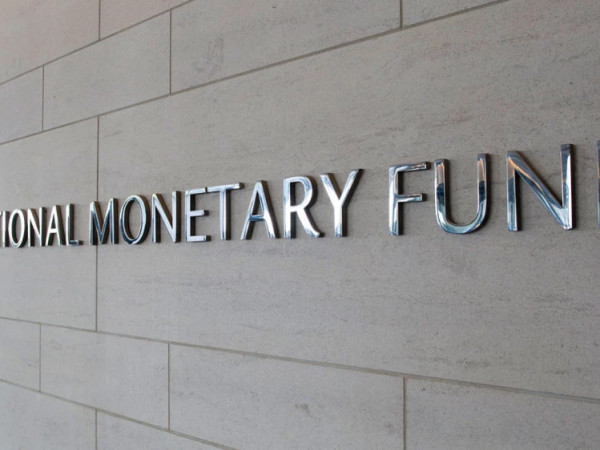World Bank Published Georgia's Monthly Economic Update. Accoridng to the document, economic growth accelerated to 11% in December. The economy benefited from intensive construction in residential/non-residential areas and increased civil infrastructure works. In the manufacturing sector, metallurgy, mineral fertilizers, and pharmaceutical production were the main drivers. However, the real estate and power sectors registered slowdown. Overall, the economy expanded by 10.1% in 2022 according to flash estimates.
Entrepreneurial activity picked up, possibly driven by inflows of money and people. Overall, the reported turnover of value-added taxpayers increased by 18% in nominal terms in December (yoy). Registration of new businesses exceeded 6,000 entities, which is 41% higher than in December 2021.
Inflation continued to ease in January. Headline annual inflation declined to 9.4% (yoy) in January 2023, compared to 9.8% in December. Around 68% of inflation was driven by food (up 15%, yoy) and utility prices (up 13%, yoy), while the impact from fuel prices eased gradually along with the global trend. Core inflation (excluding food and energy) increased to 7.7% in January, compared to 6.9% in December.
High core inflation reflects robust demand driven by the inflow of migrants (particularly in housing, household equipment and maintenance, recreation, restaurants, and accommodation services). Meanwhile, the PPI dropped to a record low of 0.1% by end-December from 3.6% in November, suggesting a considerable release of supplyside price pressures. The National Bank of Georgia (NBG) maintained the 11% monetary policy rate in February, which remains unchanged since March 2022.
According to statistics released by Geostat, the number of age pensioners increased by 1.2% in 2022, reflecting a fast-aging population. The vast majority of 808,000 pensioners are female, while 29% are male.
The number of registered socially vulnerable households increased by almost 6 percent in 2022, reaching 370,000 households, or one third of the total population. Meanwhile, the number of recipients of targeted social benefits (TSA) fell by 15%, likely reflecting the expiration of COVID19-related measures. Recently released data also show that the poverty headcount fell sharply to 17.5% in 2021 from 21.3% in 2020 (according to the national absolute poverty line), supported by social programs. Unemployment increased from 18.5 percent in 2020 to 20.6% in 2021, then declined to an estimate of 17.3% by end-2022.
Despite strong growth in the export of goods, the trade balance worsened in January. Exports were up by 38.5% (yoy) and imports grew by 25.2% in January. However, due to the large weight of imports (more than 70% in trade turnover), the trade deficit increased by 12% (yoy). The growth in exports was largely driven by the re-export of used cars (up 187%), of which the total export share increased to 23%, up from 11% in January 2022. The second largest export drivers were ferroalloys, with an 11 percent share in total exports as their value grew by 61 percent (yoy). Meanwhile, import growth was driven by oil and oil products (up 40%, yoy); copper ores, which increased from USD 2 million to USD 72 million, contributed as well. Georgia’s key export markets in January were its traditional trade partners Russia, Armenia, and Azerbaijan, accounting for 45% of total exports. The external balance of services benefited from a surge in money transfers (up 164%, yoy) and strong proceeds from tourism. Meanwhile, the exchange rate remained robust, gaining 2.2% (mom) and 13.5% (yoy) against the USD in January.
Deposits and loans grew strongly in January. The stock of total deposits increased by 29% (yoy, excluding the exchange rate effect) in January, similar to growth in December. This increase was driven by both local deposits (up 30%, yoy) and foreign exchange deposits (up 28%, yoy). Nominal credit growth eased slightly in December, down to 12% (yoy), but recovered back to 13% in January. GEL loans expanded by 16% (yoy) in nominal terms, while foreign exchange loans rose to 9%(yoy) in January. The banking sector remained healthy. Return on assets and return on equity improved slightly, rising to 3.2% and 24.7%, respectively, in December. NPLs (90 days past due) fell 0.4 percentage points, to 1.8% by end-December, as compared to December 2021.
The budget recorded a considerable deficit in December, driven by a surge in capital expenses. During the month, general government tax collection increased by 41% (yoy) in nominal terms, due to strong economic activity. Government current expenses grew by 8% (yoy). Social spending continued to decline, cut by 15% (yoy), due in part to the unwinding of measures adopted during the COVID-19 pandemic. Capital expenditure rose by 64 percent (yoy) in December, mostly driven by on-lending operations. Overall, the fiscal deficit widened to 3.5% of GDP in 2022. This is still well below the 7% deficit recorded in 2021 as the Government has undertaken fiscal consolidation. Public debt also benefited from the contained deficit and the appreciation of the GEL, falling to GEL 29.6 billion, or 40% of projected GDP, as of year-end.















